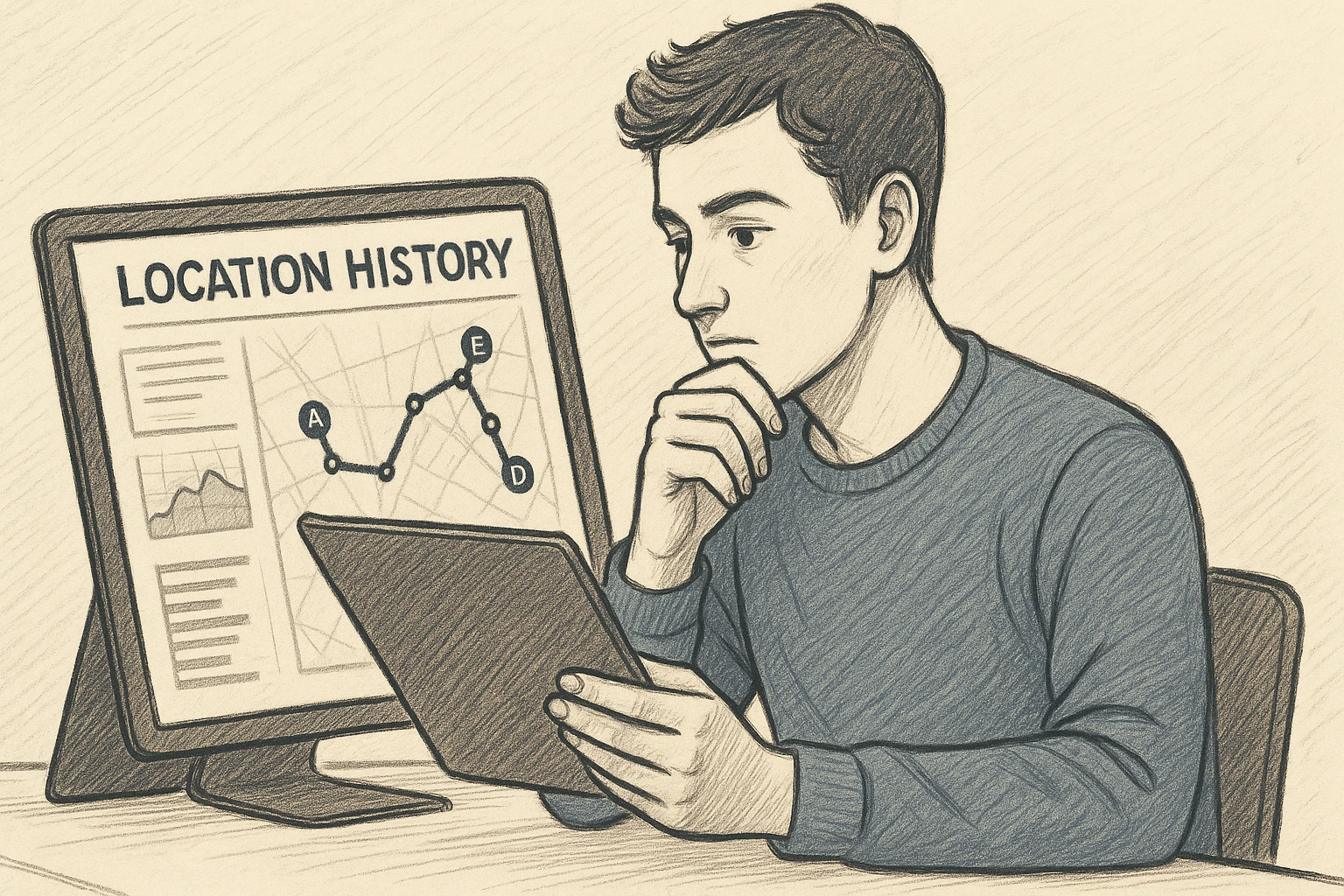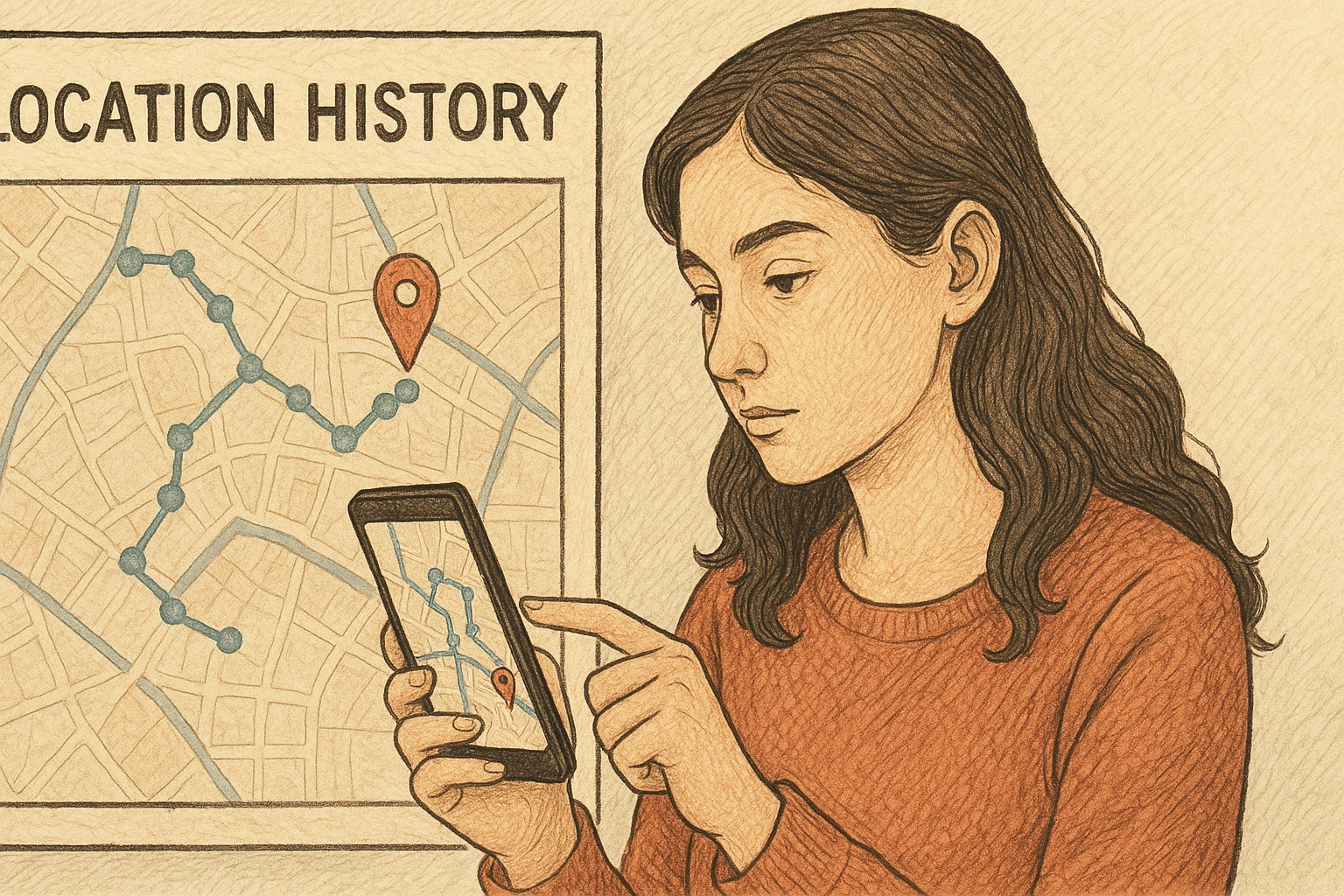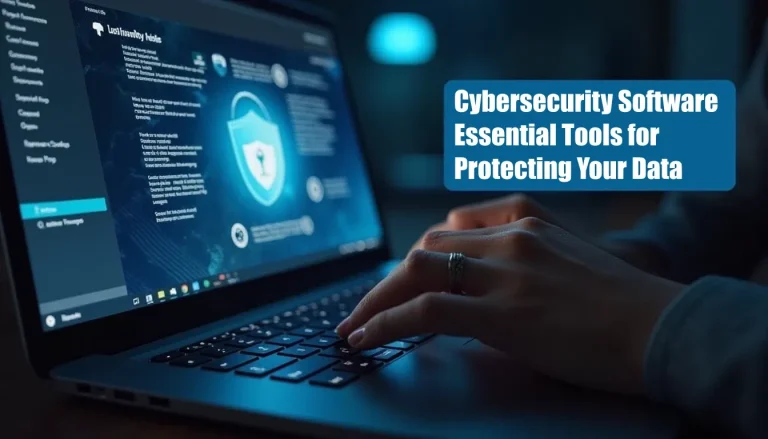In today’s hyperconnected landscape, our smartphones rarely leave our side. They’re alarm clocks, digital wallets, cameras, and—most notably—navigation assistants. But beyond guiding us from point A to point B, these devices are silently compiling a digital chronicle of where we’ve been. This is called location history tracking—a tool that, when used mindfully, can become a powerful ally for personal optimization.
Android location history tracking involves your smartphone or a specialized app continuously recording the physical locations you visit. These data points are typically compiled via GPS, Wi-Fi networks, and cell tower triangulation. The result? A comprehensive timeline of your movements that can be visualized as a heatmap, route log, or calendar-based path history.
This isn’t surveillance for surveillance’s sake—it’s insight. While at first glance this feature may seem like a simple record of where you’ve been, it’s actually a key to understanding your personal behaviors, habits, and inefficiencies.

Why Does Location History Matter in Everyday Life?
If you’ve ever asked yourself “Where did my day go?”, location history can give you a precise answer. It provides a quantifiable map of your routine—whether you’re trying to understand why your mornings feel rushed, how often you stop for coffee, or why your commute seems longer on Thursdays. With access to this data, you’re no longer guessing. You’re working with evidence.
Here’s how:
- Awareness becomes clarity: Once you know where your time goes geographically, you can begin reshaping your day to align with your priorities.
- Small inefficiencies reveal big trends: Whether it’s taking the longer route to work or making unplanned detours, location tracking shows you the unoptimized moments hiding in your routine.
- Behavioral tracking leads to better habits: Consistently reviewing your movement patterns can uncover habits you didn’t realize you had—like spending too much time in traffic-prone zones or neglecting physical activity.
Everyday Use Cases: From Productivity to Safety
Let’s look at some examples of how ordinary people are using location history to better structure their lives:
| User Type | Primary Use of Location History | Outcome |
| Busy Professional | Reviews time spent between meetings and commuting | Streamlined daily workflow, fewer delays |
| Fitness Enthusiast | Tracks walking routes and outdoor training spots | Identifies consistency, new opportunities for exercise |
| Parent | Monitors children’s trips to school or extracurriculars | Enhanced peace of mind and real-time safety awareness |
| Freelancer | Analyzes locations of client visits and workspace usage | Improved planning, reduced travel redundancy |
| Traveler | Logs visited places to build itineraries and photo journals | Better travel documentation, easier social sharing |
These aren’t outliers—they’re increasingly common scenarios made accessible by the rise of mobile-friendly location tracking apps. With intuitive solutions like Number Tracker, users can benefit from real-time and historical location tracking without needing technical expertise or additional hardware.
Key Features That Make Tracking Effective
To fully benefit from location history tracking, the platform you choose must be accurate, secure, and easy to use. Among the top contenders, Number Tracker stands out for its user-centric design and reliable data logging.
Key features include:
- Automatic background tracking (so you don’t have to manually log visits)
- Visual heatmaps and path timelines
- Geofencing alerts for entering or leaving predefined zones
- Clear data privacy controls and consent-based sharing
In essence, this tool transforms abstract movements into actionable data—helping you align your geography with your goals.
1. Reveal Hidden Patterns and Optimize Your Routine
Most of us run on autopilot throughout the day—commutes, errands, coffee runs, gym sessions. But have you ever truly measured where your time goes?
With location history tracking, what once felt like a blur becomes a clearly defined path. You might discover:
- You consistently take the longer route to work.
- You lose 30 minutes a day waiting in lines at the same store.
- You revisit the same low-productivity locations during your breaks.
By identifying these “time black holes,” you can restructure your schedule and start making smarter decisions. For example:
- Replace inefficient routes with faster alternatives using traffic-based data.
- Reorganize your task clusters—do errands in geographic batches to save fuel and time.
- Choose quieter, less distracting locations for work or study sessions.
Tracking tools like Number Tracker make it easy to visualize this data through clear timelines and location logs. You don’t have to guess—you just have to review.
2. Boost Productivity and Time Management
If productivity is about making the most of your time, location data is a window into how you’re spending it.
Imagine being able to answer questions like:
- How much time do I actually spend working vs. in transit?
- Am I spending enough time on personal growth activities—like reading or exercising?
- Where am I wasting time without realizing it?
With apps like Number Tracker, your location history is tracked automatically in the background. No check-ins, no manual inputs. Over the course of a week or month, you can review:
- Time spent at key locations (e.g., office, home, gym)
- Duration of transitions between places
- Repetitive or unproductive location visits
This empowers you to:
- Set realistic, data-based goals (e.g., reduce errands from 7 to 4 hours per week)
- Measure your progress with weekly or monthly reports
- Make time-saving tweaks to your schedule based on movement patterns
It’s not just about optimization—it’s about awareness. And that awareness turns good intentions into measurable change.
3. Enhance Personal and Family Safety
Safety is one of the most compelling use cases for location history tracking—especially for parents, caregivers, and solo travelers.
Here’s how it adds an extra layer of protection:
- Peace of mind for families: Knowing where your child was picked up or dropped off, how long they stayed at school, or whether they arrived safely at a friend’s house.
- Emergency retracing: If a family member loses their phone or goes off the radar, their last known locations can guide first responders or loved ones in real-time.
- Geofencing alerts: With apps like Number Tracker, you can define safe zones (e.g., school, home, sports practice). If someone enters or exits these zones, you get a notification.
For instance:
Your teenage daughter normally leaves school at 3:45 p.m. but hasn’t shown up at home by 5:00 p.m. You check her location history, see she stopped at a bookstore on the way, and quickly confirm she’s safe—no panic needed.
This isn’t about surveillance. It’s about smart, consensual safety support that gives families more transparency and connection.
4. Improve Accountability and Coordination
Whether you’re managing a team, supporting a family, or just trying to stay on top of your personal goals, location tracking can streamline coordination and reinforce accountability.
Use cases include:
- Remote work tracking: Teams working in the field or across locations can log their visits without needing to manually report.
- Delivery and logistics: Knowing where team members are ensures faster decision-making and service optimization.
- Personal goal tracking: Trying to stick to a new gym routine or visit more outdoor spaces? Location logs help verify your progress without relying on memory alone.
Apps like Number Tracker simplify this coordination:
- You can choose to share your real-time location or historical data with trusted contacts.
- The interface allows for quick visualization of time-location connections.
- Users can even use it to coordinate meetups by sharing live routes or past location summaries.
This functionality fosters better communication, trust, and follow-through—without the need for constant texting or status updates.

Practical Tips to Get Started and Stay Secure
✅ 1. Set Clear, Measurable Goals
Start by asking: What do I want to improve?
- Time management? Review how long you’re spending at work vs. in traffic.
- Fitness routine? Check how often you walk or visit parks.
- Family safety? Use geofencing to monitor pickups and arrivals.
Make your tracking purposeful. When you have specific outcomes in mind, like reducing commuting time by 20% or spending more weekends outdoors, the data becomes a tool—not just a record.
✅ 2. Review Regularly (But Don’t Obsess)
Checking your location history once a week is enough to start spotting useful patterns. Treat it like a performance review:
- Look for unexpected or repetitive detours
- Notice times when you’re stationary for long stretches
- Identify time slots that could be better utilized
Tools like Number Tracker simplify this process with clean visualizations and weekly summaries that show your top locations and most visited timeframes.
✅ 3. Act on Insights
Location tracking means nothing if it doesn’t lead to action. Based on your findings:
- Rearrange your schedule to avoid peak traffic
- Batch errands into one trip instead of many
- Avoid areas where you tend to waste time or get distracted
Even micro-adjustments—like leaving home 10 minutes earlier or visiting a different grocery store—can compound into massive time savings.
✅ 4. Share Wisely and Transparently
If you’re tracking location for family or team coordination, transparency is essential. Let others know what data you’re tracking and why. With consent-based sharing features in apps like Number Tracker, you can:
- Enable real-time location sharing during travel
- Use temporary location access for specific timeframes
- Share summary logs instead of constant updates
This approach fosters trust, not control.
✅ 5. Protect Your Privacy
Any tracking tool must prioritize user privacy. Number Tracker offers strong security protocols, including:
- Private dashboards
- Encryption of location logs
- Access control features (only you can view your history)
Always avoid tools that store data indefinitely, lack a privacy policy, or ask for unnecessary permissions.
Why Choose Number Tracker for Smarter Location History?
Among location tracking apps, Number Tracker is designed with simplicity, transparency, and real utility in mind. Here’s how it stacks up:
| Feature | Number Tracker | Regular Apps |
| Real-Time + Historical Tracking | ✅ Yes | ⚠️ Often requires separate upgrades |
| No Hidden Fees | ✅ Transparent pricing | ⚠️ Features behind paywalls |
| Easy to Use Interface | ✅ Beginner-friendly, clean UI | ⚠️ Cluttered or overly technical |
| Privacy Protection | ✅ End-to-end control of data | ⚠️ Shared or stored without consent |
| Geofencing Capabilities | ✅ Included | ⚠️ Premium only in many competitors |
From families and freelancers to remote teams and routine optimizers, Number Tracker adapts to your needs without overwhelming you with complexity.
Final Thoughts: Live Smarter, Move With Intention
In a world where every minute counts, tracking your location history isn’t just a tech novelty—it’s a lifespan enhancer. It empowers you to:
- Audit your day with facts, not assumptions
- Build routines based on real-world data
- Protect your loved ones with location-aware tools
- Make choices that maximize freedom, not restrict it
When paired with intelligent, privacy-first apps like Number Tracker, location tracking becomes a lifestyle ally—helping you turn ordinary movement into meaningful momentum.
So go ahead—start tracking. Learn where your time really goes. Then, use that knowledge to live sharper, safer, and more in control of your daily rhythm.









